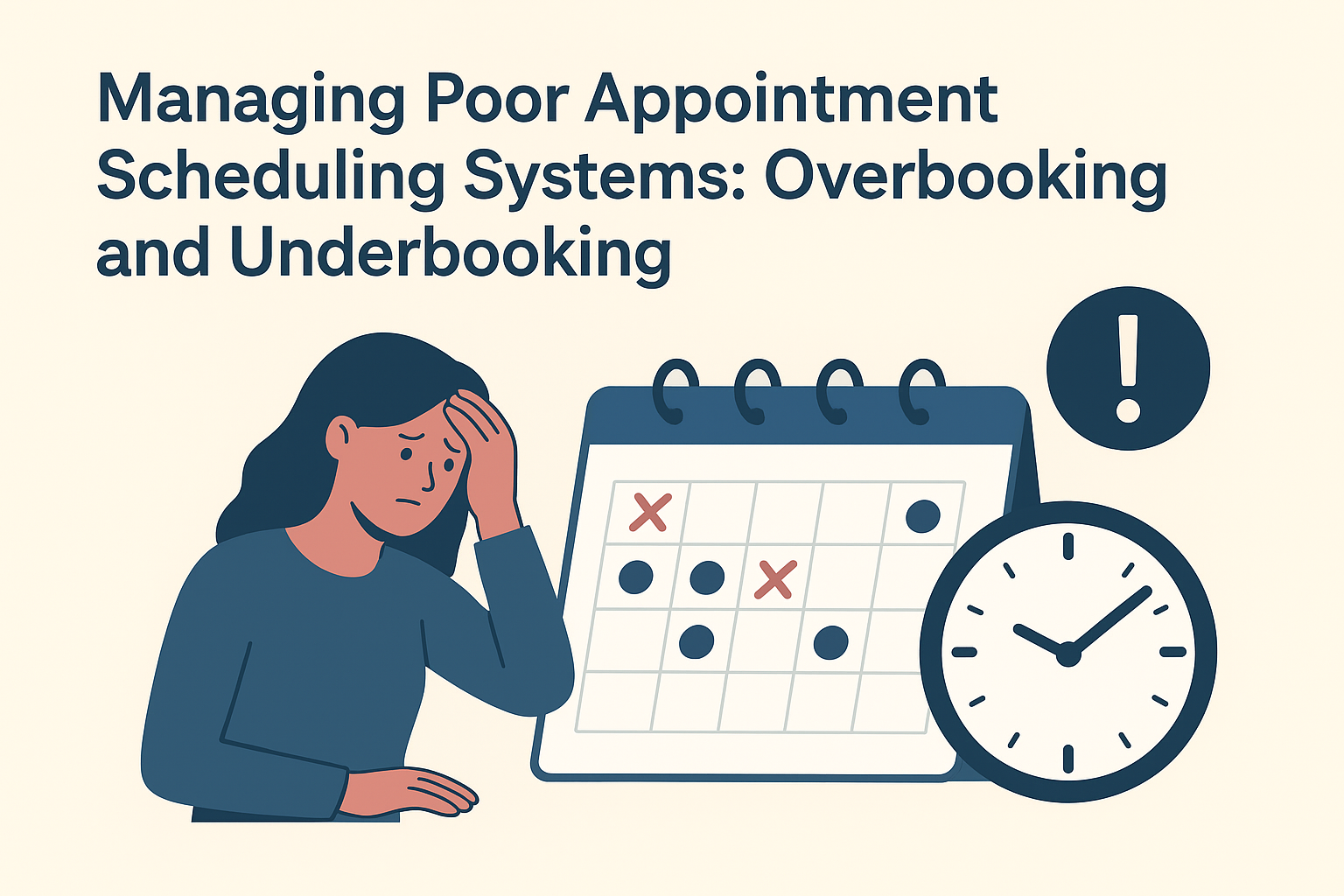Orders placed after the 22nd December 2025 will be shipped on Monday 12th January 2026. Have a safe and Merry festive season :) Dismiss
Skip to contentRecent Post

Effective appointment scheduling is one of the most important aspects of running a successful salon. The way a diary is managed determines not only how smoothly the day runs, but also how clients perceive the professionalism of the business. A poorly managed appointment system can lead to two major issues: overbooking and under booking. Both situations create stress for staff, frustration for clients, and loss of revenue for the business. By addressing the root causes and implementing structured solutions, salon owners can restore balance to their schedule and improve both client experience and profitability.
Overbooking is a common problem when too many appointments are accepted within a limited time frame. This often occurs because service times are underestimated, gaps for colour processing or clean-up are overlooked, or staff feel pressured to “squeeze in” extra clients. The result is longer waiting times, rushed services, and an overall decline in the quality of the client’s experience. Clients who consistently wait past their appointment time are less likely to rebook, which damages client retention rates. To combat overbooking, salons must first establish clear and realistic service timings for each treatment. These timings should be built into the booking system so that staff cannot shorten them on the fly. It is also valuable to build buffer times into the schedule. A simple ten to fifteen-minute buffer between services can absorb unexpected delays and reduce the risk of a domino effect across the day. Additionally, real-time digital booking systems are essential in avoiding double-bookings, particularly when appointments are made through multiple channels such as phone, online, and walk-ins. Clear communication with staff about capacity limits is also crucial; a culture of “just fitting someone in” may seem client-friendly in the short term, but in the long run it compromises service standards and damages client trust.
On the opposite end of the spectrum is under booking, which occurs when the appointment book is not filled to its potential. This can be the result of poor scheduling visibility, inefficient use of gaps in the diary, or clients cancelling at the last minute without the salon having a backup system. Under booking impacts profitability because staff time is wasted, yet wages and overhead costs remain constant. Addressing under booking requires a proactive approach. Automated appointment reminders and confirmations reduce the number of no-shows, while cancellation policies and deposits encourage clients to commit to their bookings. Online booking systems can also help reduce under booking, as they provide clients with the ability to view and secure available times without needing to call the salon. The most advanced systems are able to suggest optimal times to clients, filling in gaps in the schedule rather than leaving inefficient breaks. Another effective method is the use of waitlists, which automatically notify clients if a slot becomes available. This ensures that cancellations or reschedules do not result in wasted time on the salon floor.
Technology plays a significant role in overcoming both overbooking and under booking. Many salons still rely on outdated or manual scheduling systems, which are highly prone to human error. Investing in salon-specific booking software—such as Fresha, Timely, or Kitomba—offers major benefits. These systems prevent double-bookings, provide colour-coded daily overviews, and integrate with reminders, online payments, and even staff rosters. They also generate reports that can reveal peak and quiet times, helping salon owners make informed staffing decisions. For instance, if reports consistently show quiet mid-week afternoons, salons can introduce mid-week specials or reduce staffing levels to cut costs.
However, even the most advanced system will fail without staff understanding and accountability. Training is vital. Every team member should be confident in how to schedule appointments correctly, taking into account the unique timing of services and the need for overlaps during processing times. Assigning a designated “booking manager” or senior staff member to oversee the day’s schedule can help ensure consistency and accuracy. Weekly reviews of the appointment book should also form part of team meetings, highlighting recurring issues, sharing feedback from clients about wait times, and celebrating improvements.
Ultimately, the key to managing poor scheduling systems lies in balancing structure with flexibility. Overbooking and under booking both undermine client experience, team efficiency, and business revenue. By investing in proper systems, training staff effectively, and continuously monitoring scheduling patterns, salon owners can create a booking process that maximises time, ensures smoother operations, and improves client loyalty. Appointment scheduling is not just about filling a diary; it is about creating an organised flow that allows both clients and staff to feel valued and respected. When this is achieved, the salon environment becomes more professional, profitable, and enjoyable for all.
Here’s a one-page checklist version you can print and keep at the reception desk for your team as a guide
Salon Appointment Scheduling Checklist
Preventing Overbooking
Preventing Under booking
Daily Team Habits
Quick Responses (Use These Phrases)
Remember: The goal is not just to fill the book—it’s to keep the day running smoothly, give every client great service, and protect the salon’s revenue.